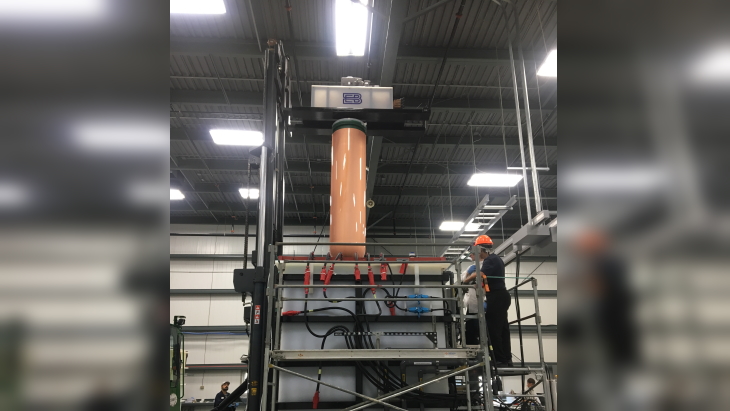The NWMO worked with an industry partner to develop the electroplating technologies. After immersing the used fuel container in the copper-based electroplating solution for about 10 days, copper cladding four to five millimetres thick forms. Although electroplating has been around for at least 100 years, NWMO says it is typically used to make copper pennies, while this is one of the first adaptations of the technology to create thick cladding.
"The Nanovate Testing System tank is purpose-built specifically to coat our used fuel containers with copper," said Derek Wilson, NWMO's chief engineer and vice-president of contract management. "Many factors - such as temperature, chemical solution and surface finish - can affect the outcome. With careful consideration of these factors, we have had success." The innovation is an opportunity for NWMO to share knowledge with used nuclear fuel organisations in other countries such as Japan, Switzerland and the UK, Wilson added.
NWMO said the copper cladded used fuel container is part of its "multiple-barrier system" to ensure safety in a deep geological repository for used nuclear fuel. NWMO is implementing Canada's plan for the safe, long-term management of used nuclear fuel. Ontario Power Generation, NB Power and Hydro-Québec, which founded NWMO in 2002, fund the organisation’s operations, along with Atomic Energy of Canada Limited. NWMO operates on a not-for-profit basis and derives its mandate from the federal Nuclear Fuel Waste Act.





_47120.jpg)

_23621.jpg)






